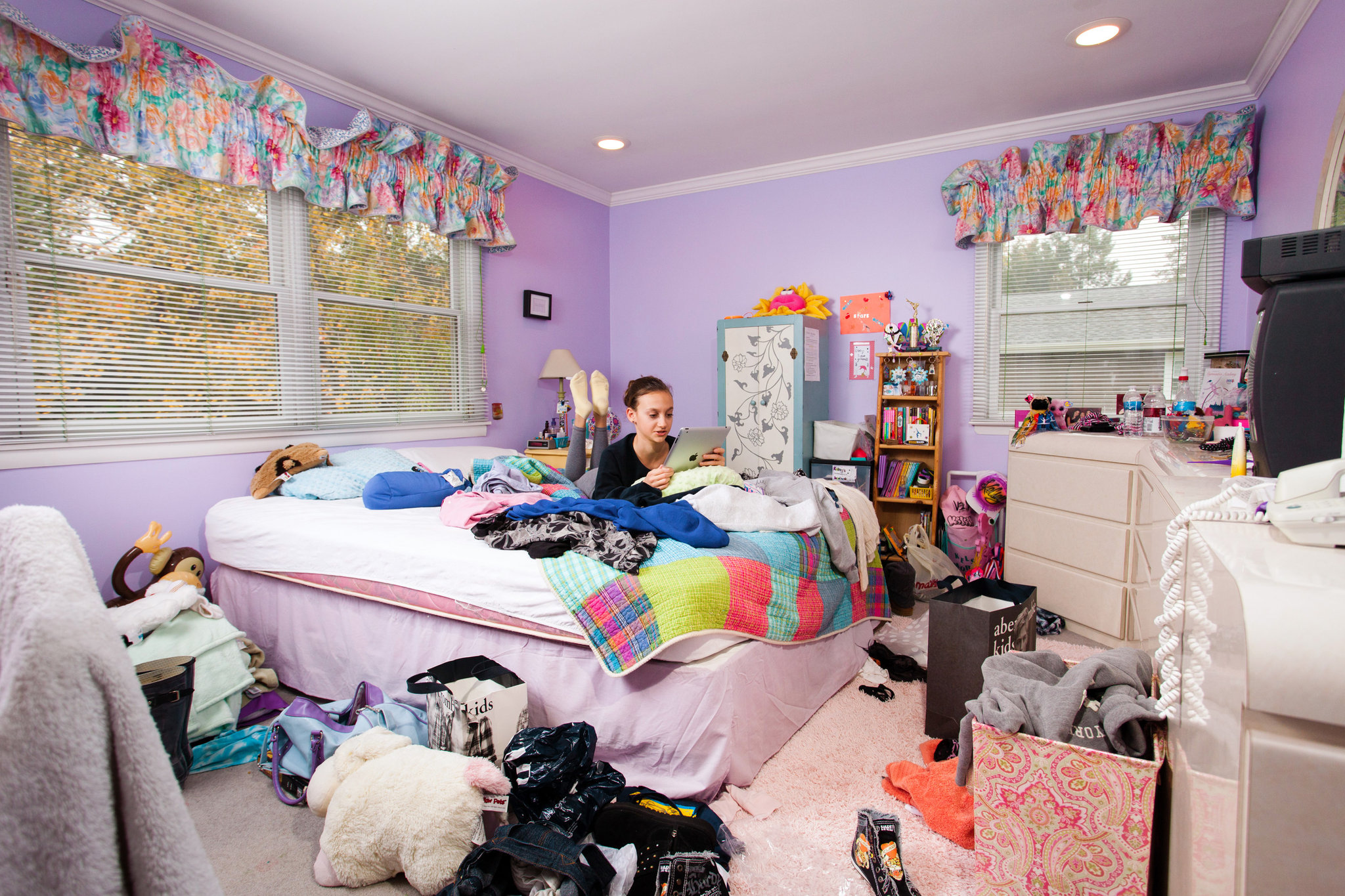The teenage bedroom: a realm where time stands still, and the laws of cleanliness seem to be suspended in a vortex of clothes, dishes, and all manner of detritus. It’s a place that can strike fear into the hearts of even the most battle-hardened parents. But fear not, for you are not alone in this struggle. The messy teenage bedroom is a widespread phenomenon, a rite of passage that many a parent must navigate.
Understanding the Teenage Mess
At the heart of many a teen’s bedroom chaos lies a simple truth: teens are busy. Between school, extracurricular activities, and the whirlwind of social life, tidying up often plummets to the bottom of their priority list. But, as we venture into the cluttered abyss, let’s remember that not all messes are created equal. While a tornado-touched room might be an eyesore, it’s unlikely to be a true health hazard, unless you’re harboring wild animals or crafting explosives—both of which are generally frowned upon in domestic settings.
It’s essential to differentiate between an untidy space and a genuinely unsanitary one. Yes, those crusty socks and curdled milk bowls are gross, and yes, they might smell like a science experiment gone awry, but they’re unlikely to cause serious health issues. As Dr. Tanya Remer Altmann succinctly puts it, despite the yuck factor, a messy teen room isn’t typically a breeding ground for disease.
However, let’s not throw caution to the wind entirely. Mold, insects, and other uninvited guests can find a haven amidst the chaos. Old food and damp laundry are particularly enticing for these critters, which, aside from being downright disgusting, can indeed pose health risks, particularly for those with allergies or asthma. Thus, while the situation might not merit a hazmat suit, it does call for some strategic intervention.
Strategies for Navigating the Chaos
The battle for cleanliness in a teen’s bedroom is often just that—a battle. But like any good general, picking your strategy is crucial. Demanding a spick-and-span room might be tempting, but it’s likely to be as effective as using a sledgehammer to crack a nut. Instead, it’s about negotiation, understanding, and setting realistic expectations.
Recognize that your teen has their own organizing style, which might not align with your visions of domestic bliss. For some, out of sight means out of mind, which can lead to a room that looks more like a floor-drobe than a well-maintained living space. By understanding their unique style, you can work together to find solutions that cater to their preferences—think open shelving for those who need to see their belongings or hooks for those who loathe hangers.
Eliminating roadblocks to cleanliness can also make a significant difference. If the process to clean or organize takes more than three steps, it’s likely to be abandoned faster than last week’s homework. Adjusting the room to suit their needs—ensuring closet doors are easy to open, shelves are within reach, and laundry baskets are sizable—can make maintaining order less of a chore.
Empowering your teen with a sense of control can also work wonders. Set boundaries, but allow them choices within those limits. For instance, some items might be non-negotiable (no food or dirty laundry on the floor), but they can have a say in how other aspects of their room are managed. This approach not only promotes responsibility but also respects their growing need for independence.
Implementing Consequences
Of course, not all strategies will work for every teen, and some situations might require more drastic measures. If gentle encouragement and strategic changes don’t lead to improvement, it might be time to enforce consequences. These should be clear, agreed upon in advance, and, most importantly, related to the issue at hand. For example, if the problem is laundry, then doing their own laundry becomes their responsibility.

Focusing on the Bigger Picture
Ultimately, the goal isn’t just about having a clean room; it’s about developing life skills and respect for shared spaces. It’s about teaching responsibility and preparing them for adulthood. And remember, while you’re navigating this messy phase, try to focus on the bigger picture. Your relationship with your teen is more important than a spotless bedroom. Praise their efforts, focus on their strengths, and remember that this, too, shall pass.
Turning the tide on a messy teen bedroom is no small feat, but with patience, understanding, and a bit of strategic thinking, it’s entirely possible. By setting clear expectations, eliminating roadblocks, and empowering your teen with choices, you can transform their chaotic space into a clean, organized haven. And who knows, along the way, you might just find a newfound respect and bond with your teen. After all, the journey from chaos to cleanliness is one that you can embark on together, forging stronger connections in the process. So, take a deep breath, roll up your sleeves, and dive into the battle of the bedroom. Victory, and a cleaner room, might just be on the horizon.
Related posts:
Is Your Teen’s Bedroom a Health Hazard?
Q: How Can I Get My Daughter to Clean Her Disgusting Room?
Is a Messy Room a Sign of Teen Mental Health Problems?





